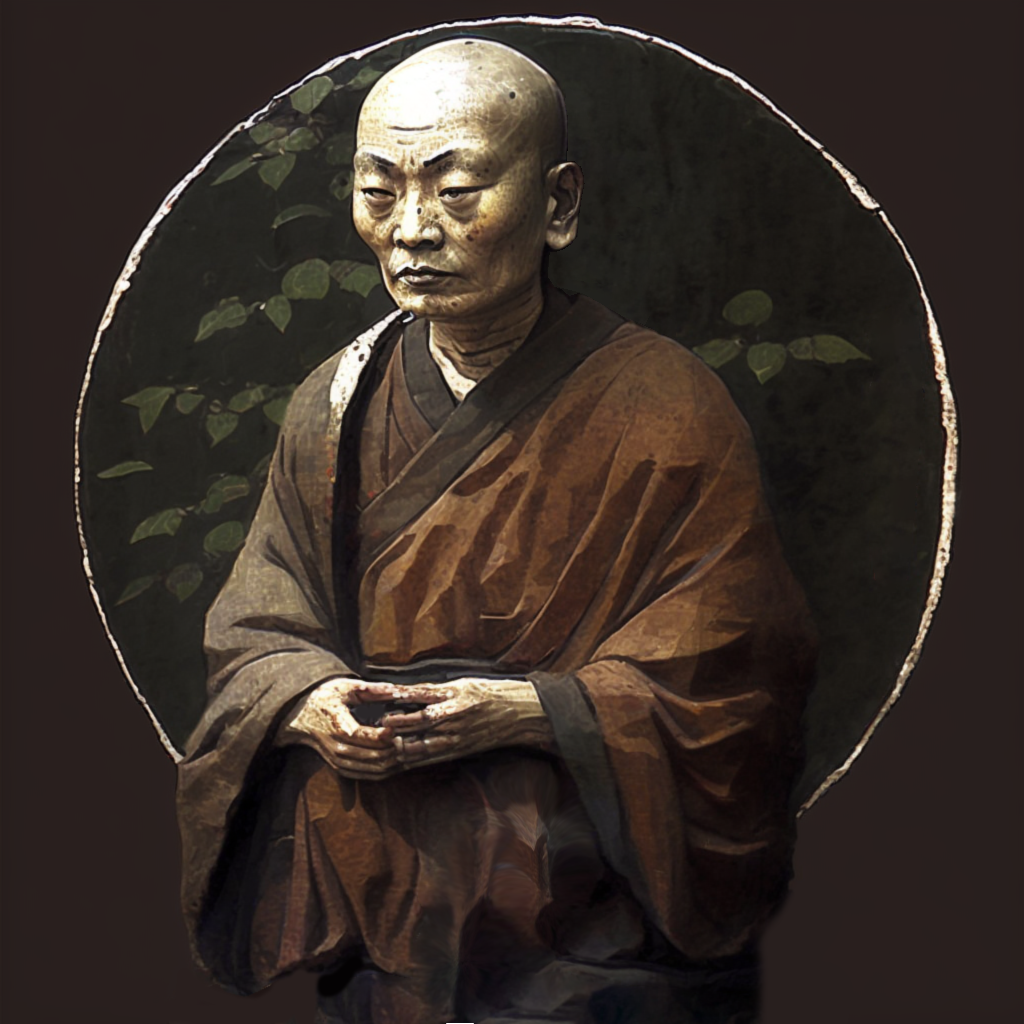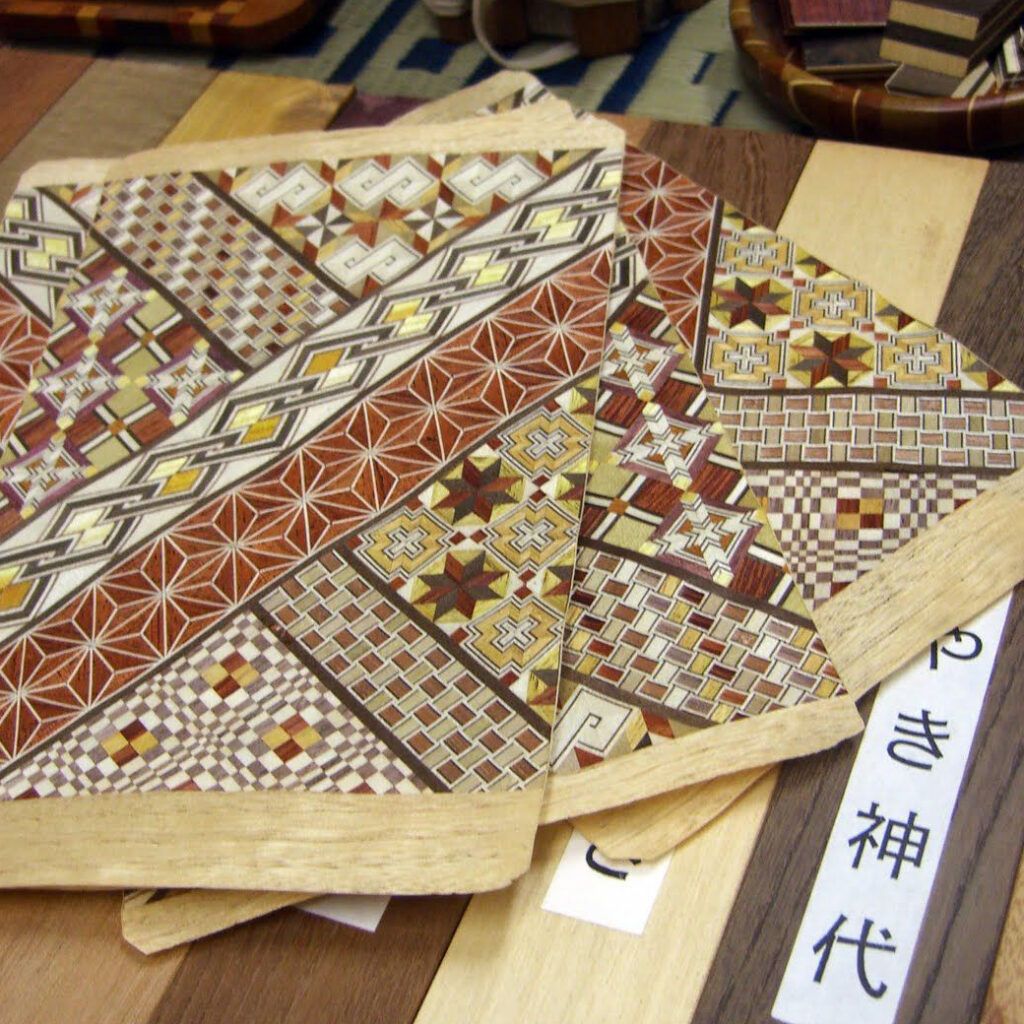Saichō was a Buddhist teacher whose influence was decisive for Japanese Buddhism. His exceptional contribution to the formation of what is now known as the Tendai Buddhist sect is incomparable. His life and work are of vital interest for understanding Japan, and more specifically Japanese Buddhism.
The Founding Father: Saichō
Saichō (767 – 822), born in Shiga, also known as Dengyo Daishi (daishi, great master), was a Japanese Buddhist monk who founded the Tendai sect. Saichō studied and meditated at Tōdai-ji in Nara and was trained by teachers who advocated different variations of Mahayana Buddhism. Around 785, he retired as a hermit on Mount Hiei, on the shores of Lake Biwa, a mountain located near Kyoto, which will become the main religious center of the Tendai sect. He built a small temple on Mount Hieizan in 788, known today as Kompon chū-do. From 804 to 805, he traveled accompanied by his disciple Gishin (義眞) to the Tiantai mountains in China’s Zhejiang province to bring back the teachings of the Tiantai School (天台宗, pinyin: Tiāntái zōng), a Chinese school of Mahayana Buddhism. After staying for a few months, Saichō returned to Japan bringing the Tiantai doctrine under the name Tendai in Japan. In 807, with the support of Emperor Kanmu, Saichō gathered a hundred disciples to form a strict discipline at the Enryaku-ji Buddhist monastery on Mount Hiei. Monks dedicated their lives to meditation and study for twelve years, living in seclusion.
Saichō was a highly respected spiritual master in Japan and a source of inspiration for Buddhist monks. He was committed to teaching his disciples the doctrines of the Buddha and helping them achieve enlightenment. His life was dedicated to the study of Buddhist texts and teaching the principles and practices of Buddhism.
A Fundamental Buddhism: Tendai
The Tendai sect was founded by Saichō and is based on the Mahayana Buddhism doctrine that promotes the salvation of all living beings. The Tendai sect is characterized by its ascetic practices, meditation, and deep understanding of Buddhist texts. Saichō developed specific practices to achieve enlightenment and formulated the Tendai doctrine, which is considered one of the most important forms of Japanese Buddhism.
The main trend of the Tendai sect is mappō, which means “the end of the Dharma.” This doctrine supports that the world is increasingly devoid of a true understanding of the teachings of the Buddha and that it is very difficult to achieve enlightenment. Saichō taught Tendai monks a special ascetic practice that he believed was the only way to overcome the difficulties of life.
Thanks to his unique and exceptional contribution, the founder of the Tendai Buddhist sect, Saichō, allowed the Japanese to understand Buddhism and reach a higher level of spirituality. His practice and teachings continue to inspire the Japanese to this day.
The Principles of Mahāyāna Buddhism
Mahāyāna Buddhism is a Buddhist tradition that encompasses several key principles:
- The Ideal Bodhisattva: The practices and goals of life in mahāyāna are oriented towards achieving the state of a bodhisattva, a selfless being who aspires to attain enlightenment in order to help all sentient beings.
- Universal Salvation: Mahāyāna teaches that everyone can attain enlightenment and that Buddhist teachings are accessible to all, without distinction of race, gender, or social status.
- Emptiness: Emptiness is a central concept in Buddhism that holds that everything is impermanent and self-nature-less. In mahāyāna, the understanding of emptiness is seen as the key to attaining enlightenment.
- Compassion: Compassion is considered an essential quality for bodhisattvas. It is a deep feeling of concern for other sentient beings and a strong desire to help them attain peace and liberation.
- Use of Transcendent Means: Buddhist practices such as meditation, prayers, and rituals are seen as means to attain enlightenment. The mahāyāna teachings encourage the use of these transcendent means to develop compassion, wisdom, and an understanding of emptiness.



